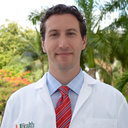Predictors of infections following cranioplasty: a retrospective review of a large single center study.
キーワード
概要
BACKGROUND
The variables that predispose to postcranioplasty infections are poorly described in the literature. We formulated a multivariate model that predicts the risk of infection in patients undergoing cranioplasty.
METHODS
Retrospective review of all patients who underwent cranioplasty following craniectomy from January, 2000, to December, 2011. Tested predictors were age, sex, diabetic status, hypertensive status, reason for craniectomy, urgency status of craniectomy, location of cranioplasty, reoperation for hematoma, hydrocephalus postcranioplasty, and material type. A multivariate logistic regression analysis was performed.
RESULTS
Three hundred forty-eight patients met the study criteria. Infection rate was 26.43% (92/348). Of these cases with infection, 56.52% (52/92) were superficial (supragaleal), 43.48% (40/92) were deep (subgaleal), and 31.52% (29/92) were present in both the supragaleal and subgaleal spaces. The predominant pathogen was coagulase-negative staphylococcus (30.43%) followed by methicillin-resistant Staphylococcus aureus (22.83%) and methicillin-sensitive Staphylococcus aureus (15.22%). Approximately 15.22% of all cultures were polymicrobial. Multivariate analysis revealed convex craniectomy, hemorrhagic stroke, and hydrocephalus to be associated with an increased risk of infection (OR = 14.41; P < 0.05, OR = 4.33; P < 0.05, OR = 1.90; P = 0.054, resp.).
CONCLUSIONS
Many of the risk factors for infection after cranioplasty are modifiable. Recognition and prevention of the risk factors would help decrease the infection's rate.


